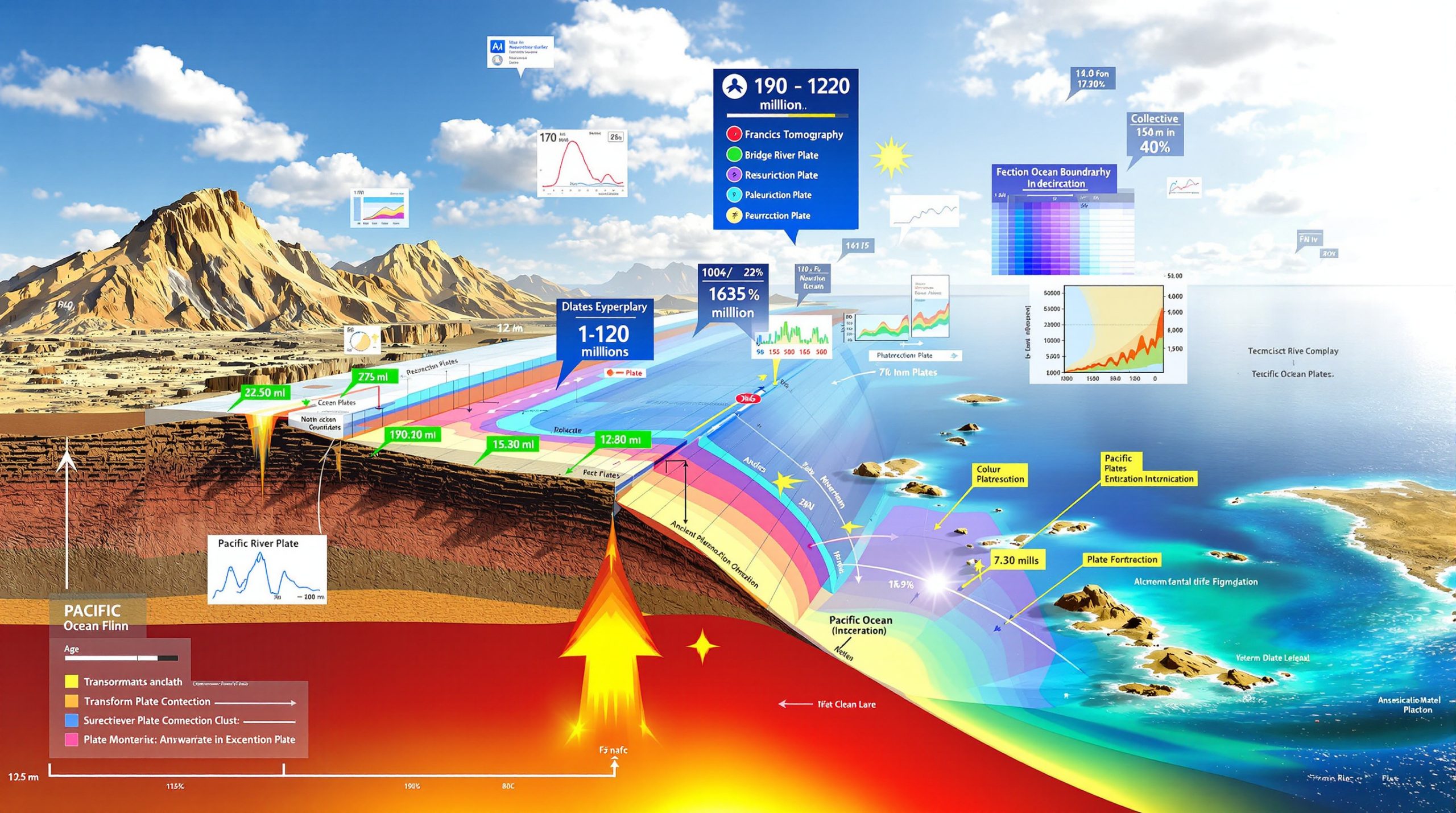Industrial mining operations across sub-Saharan Africa consume approximately 40% of total regional electricity demand, yet face chronic energy supply challenges that directly impact operational efficiency and profitability. The intersection of energy security and mineral extraction has created a complex web of dependencies where mining companies must increasingly develop their own power solutions to maintain competitive advantage in global commodity markets.
This energy-mining nexus represents both the greatest operational challenge and most significant transformation opportunity for African extractive industries. Remote mining sites, often located hundreds of kilometers from national grids, require massive energy inputs for crushing, milling, smelting, and processing operations that can consume 200-500 MW of continuous power for large-scale facilities.
Power Infrastructure Constraints Limiting Mining Development
Regional electricity systems across West Africa demonstrate significant reliability gaps that create substantial operational risks for mining enterprises. National grid systems in key mining jurisdictions face infrastructure limitations that directly constrain industrial development potential, driving the need for innovative energy solutions for mining in West Africa.
Grid Stability Challenges Across Mining Corridors
Mining operations require consistent power delivery for continuous processing operations, yet face substantial grid reliability constraints. The West African Power Pool infrastructure remains underdeveloped for remote industrial applications, with transmission networks often unable to support the high-capacity, continuous load requirements of modern mining facilities.
Power continuity challenges are particularly acute for operations requiring:
- Continuous mill operations running 24/7 schedules
- Temperature-sensitive processing equipment
- Ventilation systems for underground operations
- Critical safety systems requiring uninterrupted supply
Mining companies operating in the region report that power outages can result in production losses ranging from $125,000 to $400,000 per day, depending on the scale and type of operation. These interruptions not only halt production but can damage sensitive equipment and create safety hazards in underground operations.
Economic Impact of Energy Dependencies
The financial burden of unreliable grid infrastructure forces mining companies to invest heavily in backup generation systems, typically diesel-powered facilities that carry substantial operational costs. Transportation logistics for fuel delivery to remote mining sites often add 40-60% premiums to baseline energy costs.
Large-scale mining operations frequently spend between $35-50 million annually on fuel expenditures, with diesel costs significantly exceeding global benchmarks due to:
- Remote location transportation requirements
- Security considerations for fuel convoys
- Storage infrastructure investments
- Environmental compliance costs
These elevated energy costs directly impact project economics, often reducing net present values by 15-25% compared to operations with reliable, cost-effective power supply. For marginal ore deposits, energy costs can determine project viability entirely.
Infrastructure Development Bottlenecks
Mining companies face a complex web of infrastructure constraints that limit energy solution implementation. Limited transmission capacity connecting potential renewable generation sites to mining operations creates development bottlenecks that require coordinated regional planning approaches.
Key infrastructure challenges include:
- Inadequate road networks complicating equipment transportation
- Limited maintenance expertise in remote operational environments
- Regulatory frameworks varying significantly across jurisdictions
- Currency volatility affecting international equipment procurement
Renewable Technology Integration Transforming Operations
Solar photovoltaic systems combined with battery storage have emerged as the leading technology solution for mining operations seeking energy independence. These integrated systems offer modular deployment capabilities that enable phased expansion aligned with mine development schedules, supporting broader sustainable mining transformation initiatives.
Solar-Plus-Storage Systems Leading Adoption
Modern solar installations for mining operations typically incorporate 12-24 hour battery backup capacity, enabling continuous operations during peak demand periods and overnight shifts. The modular nature of solar systems allows mining companies to scale capacity incrementally as operations expand.
Battery storage integration provides several operational advantages:
- Load levelling during peak consumption periods
- Backup power for critical safety systems
- Grid stabilisation for hybrid configurations
- Demand charge management for grid-connected operations
Recent installations demonstrate system reliability achieving 95-98% uptime targets, significantly exceeding traditional diesel generator performance. The predictable nature of solar generation enables mining operations to optimise processing schedules around peak generation periods.
Hybrid Power Systems Optimising Performance
Sophisticated energy management systems now integrate multiple generation sources to optimise reliability and cost performance. Smart grid management systems enable real-time load balancing that can reduce peak demand by 25-35% through coordinated equipment scheduling.
Hybrid systems typically combine:
- Solar photovoltaic generation for daytime operations
- Wind power complementing solar during seasonal variations
- Battery storage for continuous supply capability
- Backup diesel generation for emergency situations
These integrated approaches achieve capacity factors of 35-45% for wind components and 22-28% for solar installations, with combined system reliability exceeding 95% uptime performance. The diversity of generation sources reduces weather-related performance variations that could impact mining operations.
Technology Innovation Addressing Mining-Specific Requirements
Energy solutions specifically designed for mining applications address unique operational requirements including variable load profiles, remote location constraints, and extreme environmental conditions. Furthermore, innovation competitions now showcase technological solutions targeting mining sector needs, including off-grid reliability improvements and reduced diesel dependence strategies.
Advanced energy management technologies include:
- Predictive maintenance systems extending equipment lifespan
- AI-integrated load forecasting improving accuracy by 40%
- Remote monitoring capabilities for unmanned operation
- Modular designs enabling rapid deployment and expansion
Strategic Energy Independence Driving Competitive Advantage
Mining companies increasingly view energy autonomy as a strategic differentiator that reduces exposure to external infrastructure limitations while providing cost predictability for long-term planning. Energy independence enables operations to maintain production schedules regardless of national grid performance, whilst delivering significant decarbonisation benefits.
Operational Resilience Through Energy Autonomy
Independent power generation eliminates vulnerabilities associated with grid instability and fuel supply chain disruptions. Mining operations with autonomous energy systems report 60-75% reductions in unplanned downtime compared to grid-dependent facilities.
System redundancy provides multiple operational benefits:
- Elimination of production losses during grid outages
- Reduced maintenance requirements for backup systems
- Improved planning certainty for production schedules
- Enhanced safety through reliable power for critical systems
Companies operating autonomous energy systems demonstrate improved operational efficiency metrics and higher equipment utilisation rates. The predictable nature of renewable energy costs enables more accurate long-term financial planning and improved project economics.
Environmental and Regulatory Compliance Benefits
Renewable energy systems enable mining companies to achieve substantial carbon footprint reductions, typically 25-40% compared to 2019 baseline levels. These improvements support Environmental, Social, and Governance (ESG) scoring enhancements that attract sustainable investment capital.
ESG improvements provide several strategic advantages:
- Access to green financing with favourable terms
- Enhanced corporate reputation and stakeholder relations
- Regulatory compliance advantages in multiple jurisdictions
- Market premium access for sustainably produced commodities
Carbon-neutral operations increasingly enable premium market access as industrial buyers implement supply chain sustainability requirements. Mining companies with verified low-carbon operations command pricing premiums and secure long-term off-take agreements with sustainability-focused customers.
Financial Performance Through Energy Cost Management
Fixed renewable energy costs provide protection against fuel price volatility while delivering substantial operational expenditure reductions of 30-45% annually after implementation. Return on investment calculations demonstrate payback periods of 4-6 years for solar installations and 6-8 years for wind projects.
Net present value improvements of 15-25% over 20-year operational periods result from:
- Predictable energy costs enabling accurate budgeting
- Reduced maintenance requirements compared to diesel systems
- Elimination of fuel transportation and storage costs
- Avoided costs from production interruptions
However, companies must also consider broader energy market dynamics, including natural gas prices forecast trends that may influence backup generation costs in hybrid systems.
Regional Cooperation Accelerating Energy Infrastructure Development
Cross-border energy infrastructure development requires coordinated approaches between national governments, regional institutions, and private sector investors. The West African Power Pool framework provides institutional support for regional grid integration projects that benefit multiple mining operations.
International Development Finance Supporting Projects
Multilateral development institutions recognise energy infrastructure as critical for mining sector competitiveness and regional economic development. International Finance Corporation partnerships reduce capital requirements for mining companies through innovative financing structures.
Development finance mechanisms include:
- Power Purchase Agreement structures eliminating upfront investments
- Blended finance reducing project risk for private investors
- Technical assistance for project development and implementation
- Policy support for regulatory framework harmonisation
Regional banks and international donors outline investment priorities focusing on renewable energy deployment, micro-grids for remote sites, and storage solutions. These financing mechanisms access substantial capital pools dedicated to sustainable infrastructure development.
Private Sector Strategic Partnerships
Mining companies increasingly partner with energy developers to implement large-scale renewable projects that serve both mining operations and broader regional development objectives. These partnerships leverage complementary expertise while sharing development risks and capital requirements.
Strategic alliances typically involve:
- Joint venture structures for project development
- Shared infrastructure reducing individual company costs
- Technology transfer enabling local capacity building
- Long-term service agreements ensuring operational performance
Energy companies bring specialised expertise in project development, financing, and operations, while mining companies provide anchor demand and local operational knowledge. These partnerships accelerate deployment timelines while reducing individual company investment requirements.
Government Policy Frameworks Enabling Transition
National governments implement policy frameworks supporting renewable energy adoption in mining through regulatory incentives and streamlined permitting processes. Tax incentives reduce renewable energy project costs while fast-track permitting accelerates implementation timelines.
Policy support mechanisms include:
- Accelerated depreciation for renewable energy investments
- Import duty exemptions for renewable energy equipment
- Streamlined environmental approval processes
- Grid connection guarantees for hybrid systems
These policy frameworks create enabling environments that encourage mining companies to invest in renewable energy solutions whilst supporting broader national energy transition objectives.
Technology Advancement Trajectories Through 2030
Battery storage cost reductions of 15-20% annually through 2028 will further improve project economics for mining applications. Floating solar systems expand deployment opportunities across regional water bodies, with potential capacity exceeding 500 MW by 2030.
Emerging Technology Integration Opportunities
Green hydrogen production integration offers opportunities for energy-intensive mineral processing applications, particularly for operations requiring high-temperature industrial processes. Hydrogen systems enable long-term energy storage and provide industrial process heat for smelting operations.
Advanced technology deployments include:
- Microgrids enabling autonomous operation capability
- Energy storage systems providing multiple grid services
- Predictive analytics optimising generation and consumption
- Blockchain systems enabling peer-to-peer energy trading
These technologies enable mining operations to optimise energy utilisation whilst potentially generating revenue from excess renewable energy production during low-demand periods. Moreover, data-driven mining operations are becoming increasingly sophisticated in managing these complex energy systems.
Market Expansion Forecasts
Regional renewable energy capacity targeting 3,500 MW by 2030 reflects substantial expansion requirements driven by growing mining sector energy demand of 8-12% annually. Investment requirements approaching $4.2 billion over the next five years indicate the scale of infrastructure development needed.
Market development projections include:
- Technology cost reductions improving project viability
- Financing availability increasing through development institutions
- Regulatory frameworks supporting accelerated deployment
- Technical capacity building enabling local implementation
Mining companies increasingly integrate energy considerations into project development planning, with energy independence becoming a competitive differentiator for attracting investment capital and securing long-term operational success.
Investment Strategies for Sustainable Mining Operations
Mining companies must evaluate energy solutions for mining in West Africa within comprehensive strategic frameworks that consider operational requirements, financial performance, and long-term market positioning. Investment priorities focus on maximising operational reliability whilst achieving cost competitiveness and environmental compliance.
Successful energy transition strategies require:
- Comprehensive energy audits identifying optimisation opportunities
- Financial modelling incorporating all lifecycle costs and benefits
- Risk assessment evaluating technology performance and regulatory changes
- Stakeholder engagement ensuring community and regulatory support
Energy independence represents a fundamental shift from operational constraint to competitive advantage, enabling mining companies to optimise production schedules, reduce costs, and access premium markets for sustainably produced commodities. Regional cooperation through shared infrastructure development and coordinated financing approaches accelerates deployment whilst reducing individual company investment requirements.
The convergence of declining renewable technology costs, improving financing availability, and supportive policy frameworks creates unprecedented opportunities for mining companies to transform energy constraints into strategic advantages. Companies that successfully implement comprehensive energy solutions position themselves for enhanced operational performance, improved financial returns, and sustainable long-term growth in increasingly competitive global commodity markets.
Want to Identify Energy Innovation Leaders in Mining?
Discovery Alert's proprietary Discovery IQ model delivers real-time alerts on significant ASX mineral discoveries, including companies pioneering sustainable mining technologies and energy solutions. Explore why major discoveries can lead to exceptional market returns and begin your 30-day free trial today to position yourself ahead of the market.




